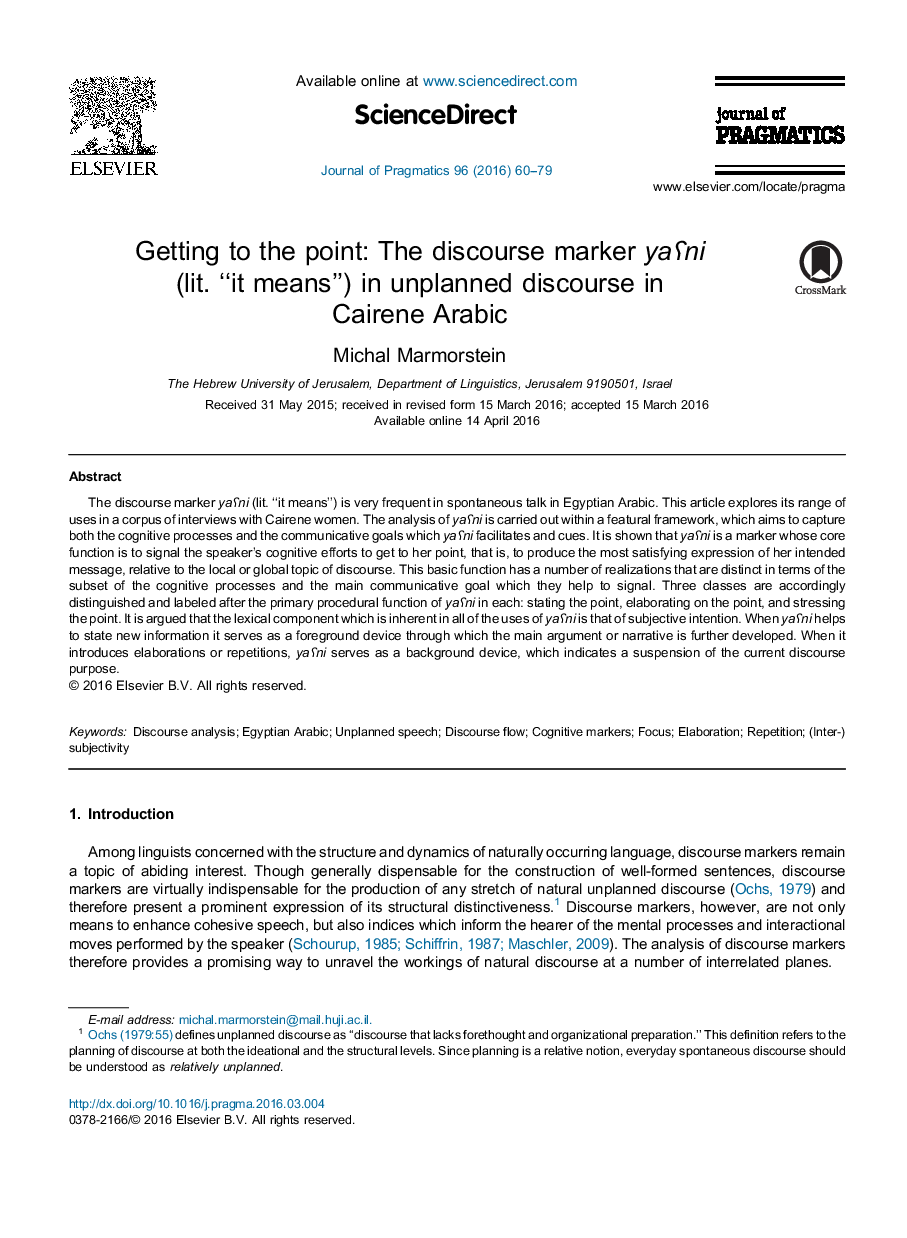| کد مقاله | کد نشریه | سال انتشار | مقاله انگلیسی | نسخه تمام متن |
|---|---|---|---|---|
| 932474 | 1474704 | 2016 | 20 صفحه PDF | دانلود رایگان |

• The discourse marker yaʕni operates in the cognitive realm.
• yaʕni introduces the speaker's most satisfying representation of her intended message.
• yaʕni marks the speaker's self- and other-orientation.
• yaʕni is an index of both subjectivity and intersubjectivity.
The discourse marker yaʕni (lit. “it means”) is very frequent in spontaneous talk in Egyptian Arabic. This article explores its range of uses in a corpus of interviews with Cairene women. The analysis of yaʕni is carried out within a featural framework, which aims to capture both the cognitive processes and the communicative goals which yaʕni facilitates and cues. It is shown that yaʕni is a marker whose core function is to signal the speaker's cognitive efforts to get to her point, that is, to produce the most satisfying expression of her intended message, relative to the local or global topic of discourse. This basic function has a number of realizations that are distinct in terms of the subset of the cognitive processes and the main communicative goal which they help to signal. Three classes are accordingly distinguished and labeled after the primary procedural function of yaʕni in each: stating the point, elaborating on the point, and stressing the point. It is argued that the lexical component which is inherent in all of the uses of yaʕni is that of subjective intention. When yaʕni helps to state new information it serves as a foreground device through which the main argument or narrative is further developed. When it introduces elaborations or repetitions, yaʕni serves as a background device, which indicates a suspension of the current discourse purpose.
Journal: Journal of Pragmatics - Volume 96, April 2016, Pages 60–79